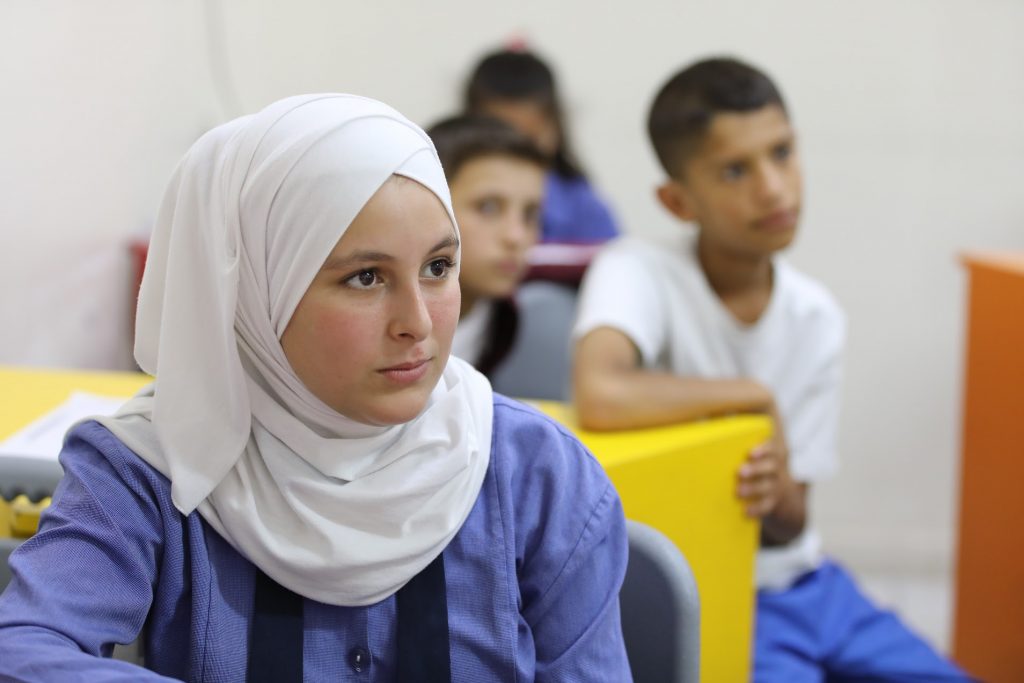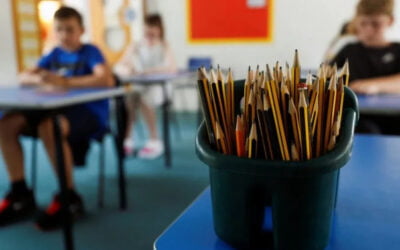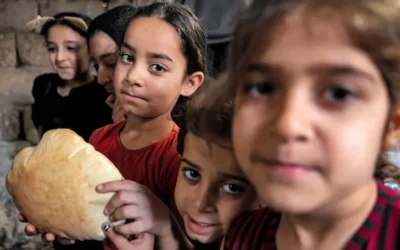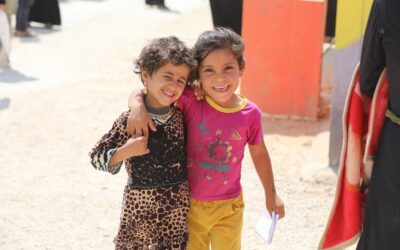Abdul Aziz Al Ghurair Refugee Education Fund – SDG Good Practices
H.E. Abdul Aziz Al Ghurair established a 100 million AED fund to support 20,000 refugees and vulnerable youth to access quality education. While funding support is critical at all education levels, research shows that enrolment rate of refugees in secondary onwards is extremely low (1.4% in Lebanon (El Ghali 2017) and 4.8% in Jordan (UNICEF 2018)). Vocational education enrolment is at 1.6% and tertiary education under 5% in both countries (AGFE 2019). These rates are expected to decrease if the secondary education pipeline continues to shrink. That is why the Fund is focused on filling the gap beyond primary, and on ensuring that refugee youth have a pathway to an elevated livelihood.
Objectives The Abdul Aziz Al Ghurair Refugee Education Fund supports high impact education programs that address an acute education gap, are impact-driven and scalable. The grants support Syrian and Palestinian refugees as well as vulnerable host community youth between the ages of 12 and 30. Key Objectives 1. Support refugee youth and vulnerable host community youth by providing access to continued education and/or complete formal schooling through innovative educational programs 2. Fill the skill gap through the provision of accredited and/or industry recognized vocational certifications that pave the way for improved livelihood opportunities 3. Provide access to university degrees or diplomas that lead to employment pathways, coupled with career counselling and internships, or apprenticeships
The Fund contributes to realizing SDG 4, 8 and 17 by: a. addressing the secondary education collapsing pipeline to ensure equal access to girls and boys to complete/ return to formal education (SDG4) b. supporting access to market-led vocational certification and tertiary specialized degrees that lead to remove and physical employment opportunities. Students are also exposed to world ready skills, English language, career readiness and mentoring (SDG 8) c. Bringing in expertise, knowledge and tools that enable partners to collectively tackle emerging challenges holistically (SDG 17).
The Abdul Aziz Al Ghurair Refugee Education Fund practices an outcome-focused philanthropic approach and values a partnership model. It ensures all supported programs are impact driven and further focuses on the importance of data collection and evaluation to continuously explore solutions and address challenges in an agile manner. Professional accountability embedded in authentic partnerships has helped keep the Fund focused on the needs of the most vulnerable. The Fund awards grants based on a competitive selection process through a committee of experts that reviews and scores applications. The grant application is shared publicly with the goal of providing organizations working directly with refugees and conflict affected youth in the UAE opportunities with the opportunity to maximize their reach and scale impact. All programs have been inclusive, as we continue to work with vulnerable groups in different communities. Inclusivity has also meant providing funds to grassroots organizations that are in direct contact with vulnerable youth. Partnership modality was strengthened between partnering organizations to maximize knowledge sharing, ongoing learning and capacity building. A total of 15 programs have been funded in the first two grant cycles providing access to secondary education to over 15,246 students, and vocational and tertiary education to over 5,275 students. The Fund’s strategic approach with the 12 key partners allowed it to responsively adapt to the changing needs on the ground. Together, it assured critical educational opportunities to over 27,000 students, exceeding the original target to support their pathway to elevated livelihoods.
SDG 4 · 27,321 refugees and vulnerable youth (55% females) have access to quality education · 22,046 students in secondary education to expand the pipeline. One partner set up an ECE centre to ensure female drop-outs who had children return to formal education SDG 8 · 75% graduating students are employed – 2-4 x average wage · 5,123 have access to accredited vocational courses that lead to immediate employment · Partners conducted labour market assessments to challenge refugee’s employment restrictions and curated new courses aligned with market demand. · 60% girls’ participation in advanced computing courses and all successfully employed SDG 17 Partnerships across multiple NGOs and multilateral agencies H.E. Abdul Aziz Al Ghurair founding donor to the Global Muslim Philanthropy Fund for Children; an innovative platform that leverages 250M USD to humanitarian and development programs to accelerate the achievement of the SDGs, through a collaborative approach
Enabling Factors · Partnerships built on trust, clear expectations, open dialogue and transparency, · Responsiveness and resilience – Helping partners meet emerging needs through repurposing funds, and speeding up decision making, · Highly adaptable and proactive in finding innovative solutions beyond rigid planning to meet realistic expectations without compromising quality. · Strategic philanthropic approach focused on impact and outcomes. Constraints · External Factors – revolution and tragic explosion in Lebanon; COVID-19 and its economic and mental health implications · Employment Restrictions for refugees a continuous challenge in Jordan and Lebanon
The Fund prioritizes local organizations that may not have the means or qualify to apply for bigger grants but have good results. Capacity building of partners on the ground increases their ability to apply for bigger grants. All international organizations partnering with the Fund must work with local partners on the ground to ensure transfer of skills and knowhow. The Fund leverages partnerships to respond to needs beyond its scope, assuring that grantees develop the network and skills to incorporate in-kind contribution, and consider financial sustainability. The Fund also partakes in global webinars, continuously engages its partners to maximize knowledge sharing and enable grantees to expand their partnerships. The Fund also works with its grantees throughout the program cycle to ensure systems are in place to facilitate scaling up.
Our partners conducted assessments to understand challenges posed by the pandemic, and designed response plans based on data. Findings have shown that online learning is the main solution for education with importance of digital innovation. We worked closely with our partners to re-purpose current grants to rapidly meet emerging needs, for e.g, transportation allowances were used to purchase connectivity or devices. Our vocational partners transitioned to online learning and 75% of graduates are now employed. In response, H.E. launched a COVID-19 Response to Education fund in April 2020 to support an additional 7,000+ students. Challenges and needs are constantly changing, it is crucial to be creative in finding solutions, and highly adaptable, drifting away from rigid program plans.
Feature By: Department of Economic and Social Affairs – Sustainable Development



